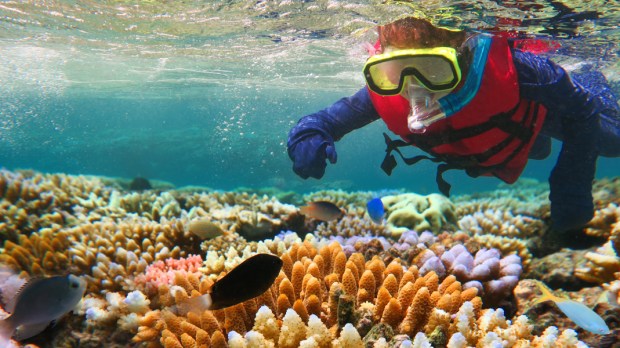The Great Barrier Reef was recently proclaimed dead in a tongue-in-cheek obituary. While CNN reassured us this was an exaggeration, it brought the impending threat of coral annihilation to the forefront of public thought. Now, researchers are rushing against the clock to find a solution to rampant coral bleaching, which is the main culprit.
Smithsonian.com reports that Rachel Levin, a molecular biologist, has recently proposed a way to save these marine ecosystems, in a paper in the journal Frontiers in Microbiology. Her strategy would repopulate bleached coral with lab engineered symbionts, rather than attempting to find healthy specimens in the wild and relocate them.
This method could actually work. Smithsonian explains that since coral bleaching is a breakdown of a symbiotic union, introducing new symbionts could restore an entire reef:
The coral animal itself is like a building developer who constructs the scaffolding of a high rise apartment complex. The developer rents out each of the billions of rooms to single-celled, photosynthetic microbes called Symbiodinium. But in this case, in exchange for a safe place to live, Symbiodinium makes food for the coral using photosynthesis. A bleached coral, by contrast, is like a deserted building. With no tenants to make their meals, the coral eventually dies. Though bleaching can be deadly, it’s actually a clever evolutionary strategy of the coral. The Symbiodinium are expected to uphold their end of the bargain. But when the water gets too warm, they stop photosynthesizing. When that food goes scarce, the coral sends an eviction notice.
The rising water temperature is causing the reefs to evict their Symbiodinium, but there are none around to replace them. Which has lead Levin to the conclusion that she needs to create “super-symbionts” which can withstand the rising temperatures and continue to produce food for the reefs.
Levin was able to identify a strain of Symbiodinium which was resistant to heat and inserted copies of these crucial heat tolerating genes into the weaker Symbiodinium. This created new a strain adapted to live with corals from temperate regions.
However, it was no easy task to insert these genes, since the cells are encased in armored plates, cell membranes and a cell wall. The next hurdle became how to insert these genes without breaking and killing the cell. For this, Levin employed a virus, which she modified to carry the heat-resistant genes, and infected the cells with it.
While this method seems extreme, Levin does not consider herself to be a “crazy scientist,” citing gene altering in mosquitoes as an even wilder use of science:
Protecting humans from devastating diseases like malaria or Zika—scientists have been willing to try more drastic techniques, such as releasing mosquitoes genetically programmed to pass on lethal genes. The genetic modifications needed to save corals, Levin argues, would not be nearly as extreme. She adds that much more controlled lab testing is required before genetically modified Symbiodinium could be released into the environment to repopulate dying corals reefs.

